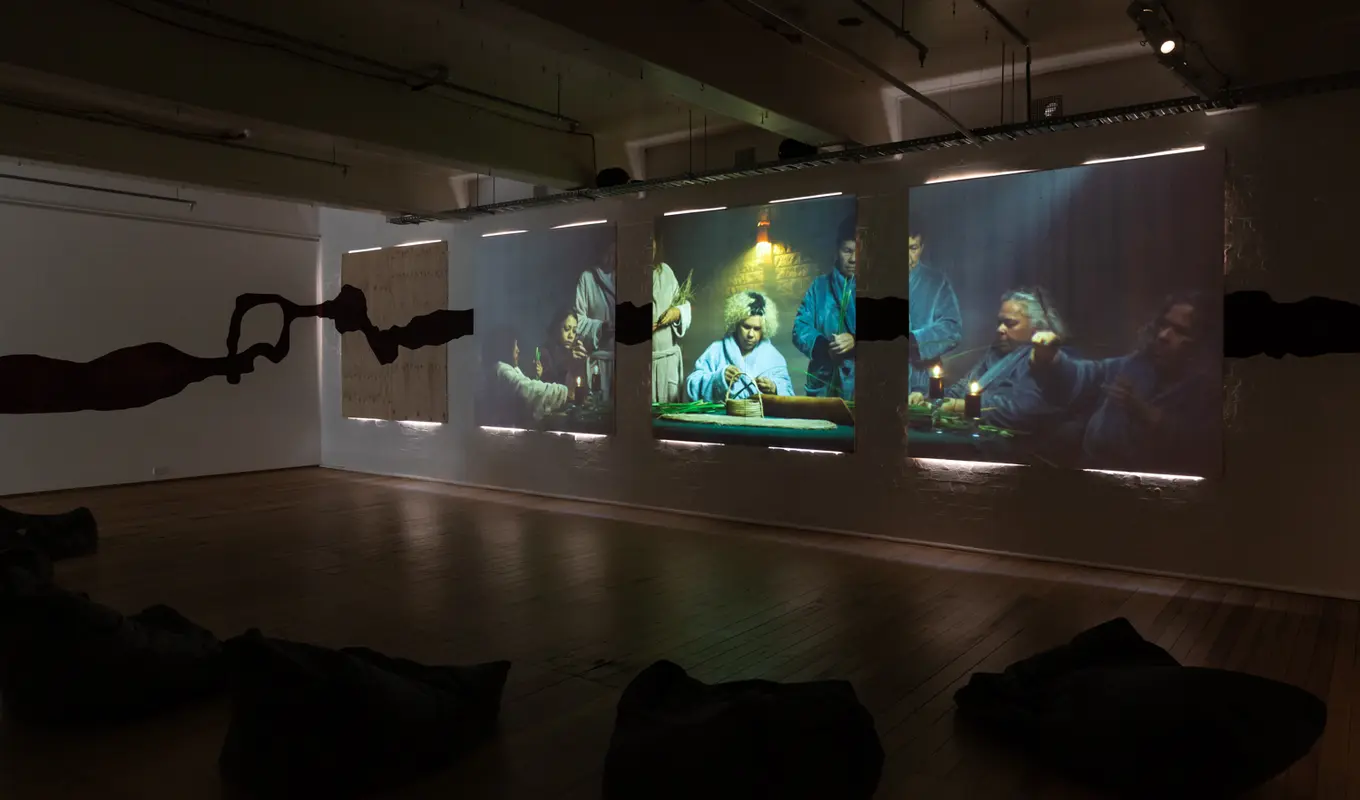“Guppa-Dhii”
Amy Hammond
5 Oct → 12 Nov 2024
West Space Window

Amy Hammond's Guppa-Dhii (tea) is a tribute the sacred space dhii holds for meaningful connections, yarning, and moments of silence. She says,
"Like weaving, dhii builds and strengthens relationships, and is where cultural revitalisation and continuation happens".
For the artist, this is exemplified by her memory of her grandparents' travelling ritual. As a child, they frequently travelled between Gamilaroi Country, Moree and Wiradjuri Country, Wellington. Amy's grandparents, Yvonne and Spoto, would carry their thermos, condensed milk, sugar, and enamel cups. One day their car broke down outside of Coonabarabran, on the Narrabri side. While waiting for her Pop to return, Amy and her Nan shared a dhii and a yarn.
Amy's experience with her grandparents encapsulates the way dhii can create a space, even in the most mundane or challenging circumstances, for sharing cultural knowledge and values.
In the West Space Window, woven vessels modelled after Yvonne and Spoto’s enamel cups sit among the lomandra grasses they were woven from. They symbolise not just a vessel for tea, but for memory, culture, and relationships, and for Amy, the act of weaving them becomes a tangible representation of intangible bonds between people, and with Country.
Amy Hammond was invited to present in the Window by Gabi Briggs as part of her West Space Commission ARKAN & IRBELA. Supported by City of Yarra through their Annual Grants Program.

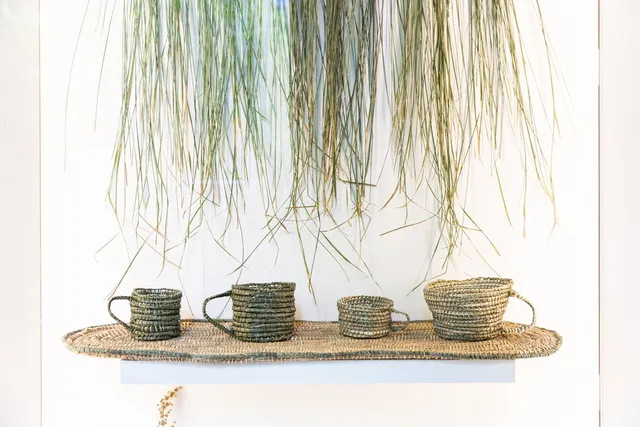
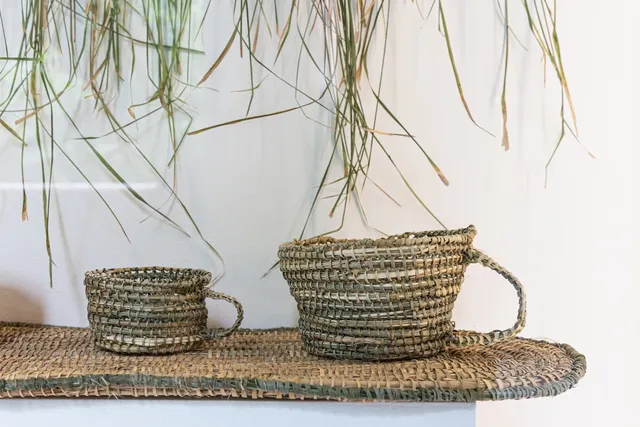

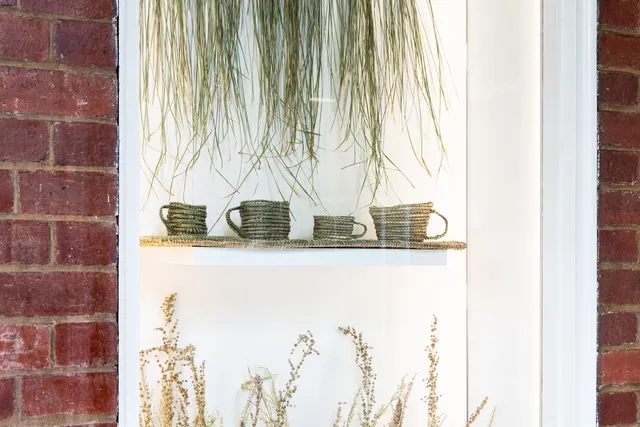

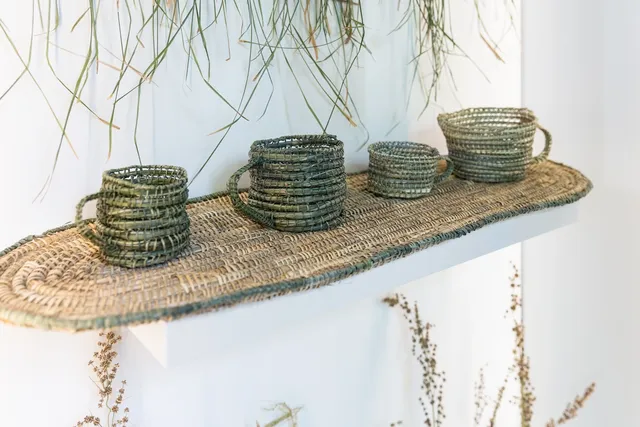

Amy Hammond is a Gamilaroi Yinarr (woman) from the Moree and Wellington communities of NSW, now based in Tamworth. Committed to First Nations ways of being and knowing, Hammond uses native grasses and responsibly sourced materials, collected and prepared by hand. Her work harnesses the physicality and materiality of traditional Murri and Koori weaving to create contemporary objects and narratives. By applying ancestral techniques to traditional and non-traditional forms, Hammond demonstrates that traditional weaving is a living, evolving art form capable of bridging past and present.
In 2013, Hammond co-founded Yinarr Maramali, meaning made by Gamilaroi woman's hands, working with Gamilaroi and neighbouring Communities revitalising weaving through workshops, public art and collaborations. Yinarr Maramali provides cultural mentoring and opportunities for Yinarr and aspiring artists.
